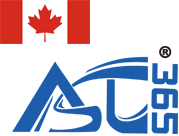|
1.
Unpack the instrument, check whether all accessories are available,
clean the instrument and place it on a relatively stable workbench.
2. Push the pull rod into the instrument body, put the water level gauge
into the barrel until the bottom surface of the water level gauge
reaches the die baffle, adjust the four adjusting screws, tighten the
adjusting screw lock nut and remove the water level gauge.
3. Push the die into the barrel from the top of the cylinder through the
loader bar until it reaches the die plate, and put the piston rod
(assembly) into the cylinder.
4. Connect the power plug, turn on the power switch on the control
panel, and the power indicator will be on. Set the test parameters,
press the start button on the test homepage, and start to heat the
instrument.
5. When the stable temperature holds 15 minutes, wear the advanced
prepared gloves (to prevent burns) to remove the piston rod and then put
the samples into the barrel through the hopper. Put the loader bar into
the barrel to compact the samples. Then put the piston back into the
barrel.
6.
Conduct sample cutting in different modes as needed:
(1)Automatic
cutting: Press ‘RUN’ when the piston rod’s mark aligns with the barrel
opening.
(2)Manual cutting:
Press ‘SPIN’ when the piston rod’s mark aligns with the barrel opening.
(Note: For MVR testing, no need to set automatic cutting time and
frequency.)
7. After the test is completed, select 3-5 bubble-free samples, cool
them, weigh them, take the average value, input it into the instrument,
and press "OK" to automatically display the result (MFR or MVR).
8. After finishing the test, clean the instrument thoroughly.
9. Turn off the instrument and pull out the power cord.
|










